'The Post-digital Condition' is the opening essay from the essay collection by INC's Miriam Rasch, Swimming in the Ocean: Texts from a Post-digital World, to be published in Dutch by De Bezige Bij in June 2017. The translation was done by Nadia Palliser, the (analogue) photos come from project Wendepunkt by Maarten van Riel.
Enlarge
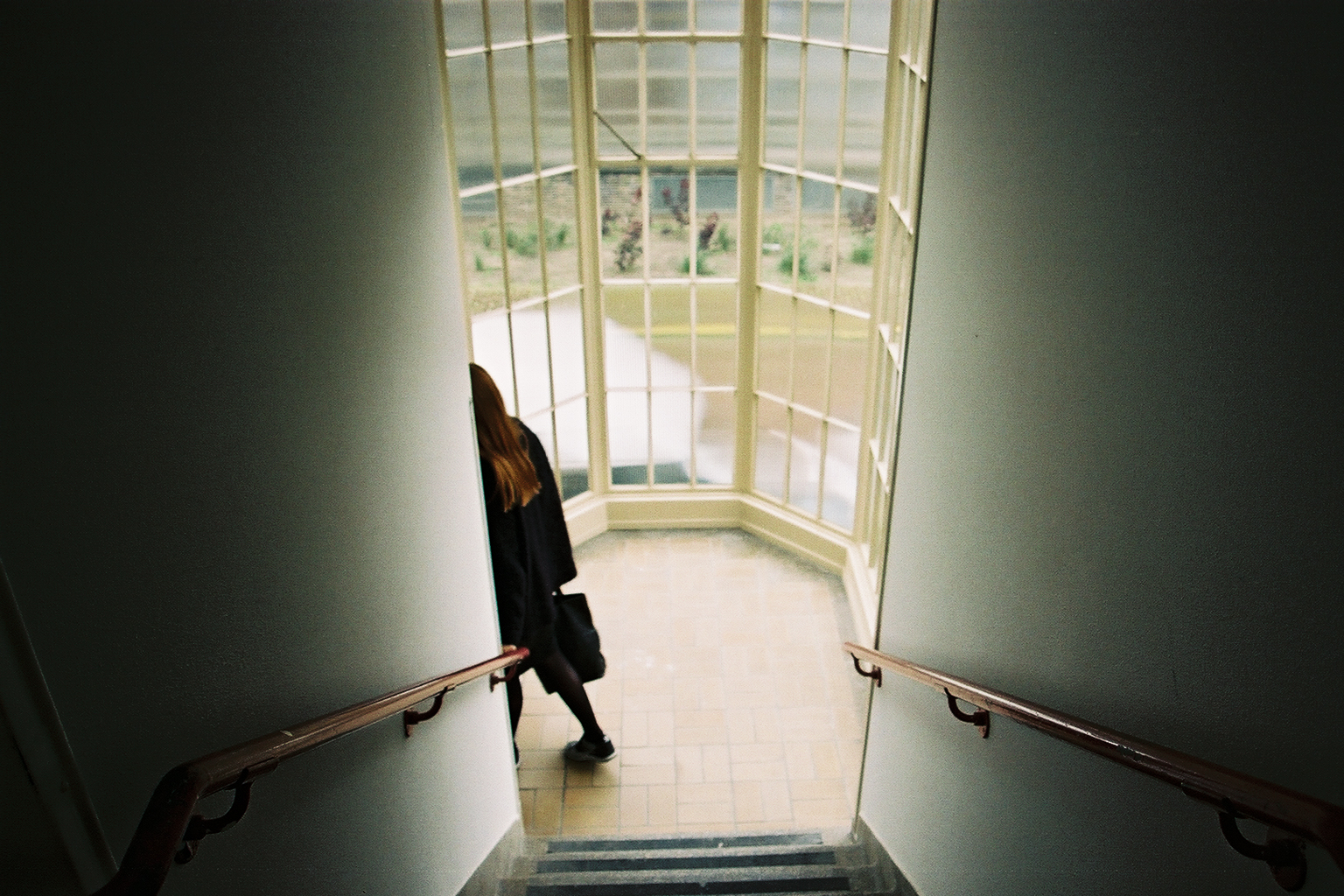
Maarten van Riel, http://wendepunkt.nl/
1.
Google ‘staying yourself’ and you’re corrected on the first page of results: according to the search engine what you really want to know more about is how to stay true to yourself.
There she goes, a fugitive, my double, a shadow, slipping in and out of the crowd, on the street, down an alley, in and out of the shops. In the sunlight I catch a quick glimpse of her hair, her coat, her face turned towards the side. I mustn’t lose sight of her, I must catch her true image, keep as close to her as possible.
But perhaps she is not running away from something but towards something. Where to? She probably doesn’t even know this herself. First pulled this way, then that way, her attention is drawn towards the noises and flashing lights, special offers and signs on sale. People pulling at her sleeve and whispering in her ear, her phone buzzing and singing, the screen lighting up with a merry-go-round of messages. Follow her now, stay close to her!
‘When I set out to come here, I mean, here generally, to this town, ten days ago,’ writes Dostoevsky in Demons through the revolutionary Pyotr Stepanovich, ‘I decided, of course, to adopt a role. The best would be no role at all, just one’s own person, isn’t that so? Nothing is more cunning than one’s own person, because no one will believe you.’ If only things were so simple. Just to be one’s own person without concern about who that person is, about who is adopting a role and who is not and without the need to be known and appreciated by anyone.
Almost two hundred years after Demons, it has become doctrine to find, be and stay true to yourself. No one really knows how this is accomplished, however. After all you are also expected to continually rise above yourself and reinvent yourself, again and again. We live in a performance society wherein you design your identity and play different roles in different contexts. Context collapse looms, as you act a role that doesn’t match your public at that particular moment, when for instance a photo of you partying surfaces on your boss’s timeline. And if you can’t manage to act out the performance meticulously, like a magic trick, it’s your own fault, you are obviously incompetent. Being one’s own person so that no one will believe it? I would rather adopt the role of someone else, in the hope that someone, anyone, will believe that it is me.
In Sheila Heti’s novel How should a Person Be? the main character, Sheila, laments: ‘You can admire anyone for being themselves. It’s hard not to, when everyone’s so good at it.’ There’s one exception, one person who is not good at being themselves: Sheila herself. Of course, we all think this: as I follow a shadow that vaguely resembles myself, people around me seem to sail through life with envious ease. How do they manage it? How do they stay themselves without any problems, while I have no idea who my own person is?
To answer the question set forth in the title of the novel, Sheila turns to the people around her: friends, boyfriends, artists, career coaches, therapists. She transcribes emails, records conversations, flips through the pages of books and makes an attempt to write. Who she is, how and what she should be, be it hairdresser, queen of blowjobs, playwright, wife or recreational drug user, she does not know.
Adopting a role for yourself, like Pyotr put it, may on reflection be an adequate description of modern life. What is the self, after all? Nobody really knows. Self-help gurus claim it is becoming and manifold and at the same time it exists in its authentic form; it is both dependent and ideally autonomous. You can never completely coincide with the self, never grasp it completely, but you can at least try to stay close to it. The self is a useful illusion – one talks about it as if it exists, and that’s really all one can say about it.
By extension, this applies to the rest of reality too. Reality is reclining out of focus, it hides behind stories, images, interpretations, make-believe and perversion. ‘Reality’ is only one of the many contexts (and a boring one at that) in a world which is saturated with photos, videos, sounds, music, whispered, shouted and written words, language and signs, links, screens, buttons, interactive installations, acceleration and amnesia. In the post-digital condition it seems the world and reality irreversibly drift apart.
Enlarge
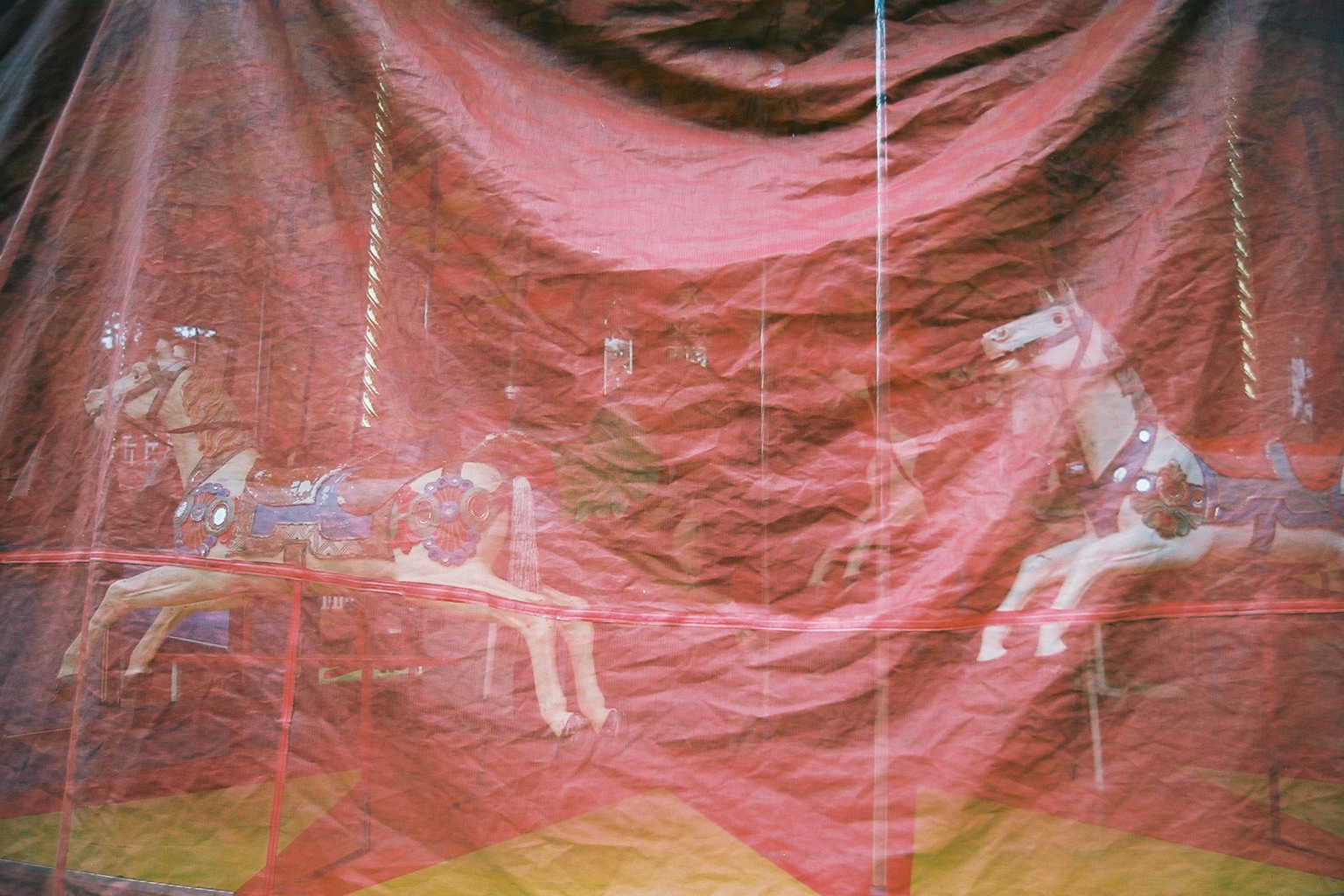
Maarten van Riel, http://wendepunkt.nl/
2.
‘Post-digital’ doesn’t mean that the digital era is behind us. The concept heralds a new phase wherein the digital has become self-evident, hardly distinct from the ‘non-digital’. The digital turn has been accomplished, there’s no way back. You’ll just have to put up with it, just like you live with the neutrinos that rage, billions per second, through the material body which is yours.
In the post-digital, reality, has also become difficult to recognize, just like the self. At the same time, it can’t be avoided either. It seems we are obsessed with reality but before everything, the (social) media are already there, making an act of it, a story, an anecdote. In a comment on the Dutch poetry blog ooteoote, poet Maarten van der Graaff wrote the following reaction in a discussion that arose around one of his poems: ‘Even if I resist, the world in which I exist invades my language, even with only a slight cough, and that world, next to so many other and far worse things, can be mundane and exhibitionistic (...) This is no joke to me, nor some trendy influence, it is a phenomenon that drives me to despair sometimes.’
The world will always permeate the language of poets, but since the rise of the web, something has changed. There used to be a kind of delay in contact, and also it happened only by invitation – through the newspapers, TV, during dinners with friends, in the pub, at school or on the streets. Now that world is constantly available, at your fingertips, ready to be consumed in real time and acting intrusive when left unattended for too long. The world reveals itself through your screen, like a party crasher who immediately starts overbearing the party. And from all these screens, from the traditional to the new, language can be heard. In another comment Van Der Graaff describes a snapshot of that world and how it entered his poem:
In this case, sentences from a episode of MTV Made invade the intimate scene between two lovers. The trivial words speak to me of a world of desire and tragedy. For example, in the concluding scene of the episode, a boy says to a girl: “I want you to feel free again.” Perhaps it is a gesture of kindness but the girl doubts his intentions. She suspects he has a hidden agenda and says: “what a good excuse.” These are no trendy phrases to me. The imperative “play it cool” is pretty creepy if you think a bit about its implications. Someone who always wants to play it cool, could look at everything they see in the world and say “what a good excuse”.
MTV Made is a reality show – the hybrid genre in which one never really knows what is ‘real’ or what has been scripted and in which the distinction between the two has become irrelevant. What’s more, in the case of MTV Made, ‘reality’ is played out by teenagers (people who by definition are not what they are to become). They are ‘made’ into something they are not themselves. The Wikipedia-page of the program reads like a poem: ‘Selena is made into a surfer chick. / Richard is made into boyfriend material. / Abby is made into a hip hop dancer. / Christian is supposed to be made into a football player, but refuses to listen to his female coach and quits.’ And so on for another 280 lines, one for each episode.
The series are filled with American, semi-articulate people, talking like self-help books, practicing their role in society, and reflecting on their emotions with the platitudes that go with them. It doesn’t stop there. Their sentences return, translated into Dutch – ‘speel het cool’ – in the poem by Van der Graaff, published on a Dutch poetry website and reviewed and discussed by other poets, readers and critics in the comment section. I use them in my essay, which is then translated back again into English, and thus the post-digital world turns round and round: from a TV program, via a poem, to a comment on a blog, to a Wikipedia page and finally on paper and back to the web. Sheila Heti would say, semi-articulately: ‘We don’t know the effects we have on each other, but we have them.’
What a good excuse.
Enlarge
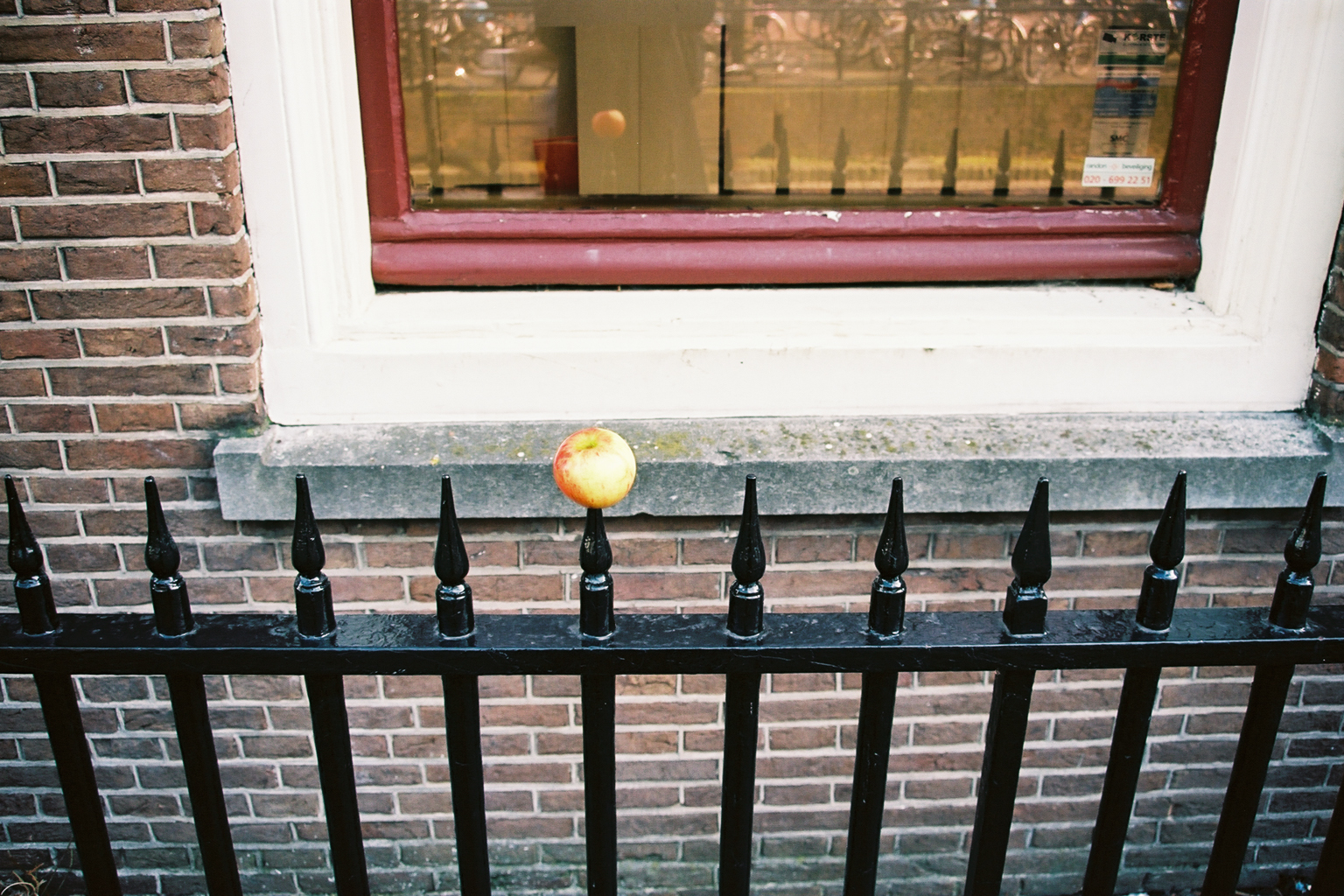
Maarten van Riel, http://wendepunkt.nl/
3.
In the highly mediated, post-digital world of today, there is a strong desire for a lost and indisputable reality. An unmovable and formidable reality, which used to be the solid basis for all experience. Karl Ove Knausgaard brings this longing to the fore: even though he doesn’t seem particularly fond of the internet, he is somewhat an historian of the post-digital condition. In Some Rain Must Fall, book 5 of My Struggle, he tells of his introduction to the world wide web:
Something else at Student Radio which I hadn’t seen before was the Internet. This was also addictive. Moving from one page to the next, reading Canadian newspapers, looking at traffic reports in Los Angeles or centrefold models in Playboy, which were so endlessly slow to appear, first the lower part of the picture, which could be anything at all, then it rose gradually, the picture filled the frame like water in a glass, there were the thighs, there, oh, there was … shit, was she wearing panties? … before the breasts, shoulders, neck and face appeared on the computer screen in the empty Student Radio office at midnight. Rachel and me. Toni and me. Susy and me. Hustler, did they have their own website as well? Rilke, had anyone written about his Duino Elegies? Were there any pictures of Tromøya?
Knausgaard traces the emergence of his series of six novels, My Struggle, back to his dislike for fiction, without really knowing where this dislike came from or what to do about it. For him it had something to do with the fact that the unreal world of the media is ever more present, is gradually becoming the only world we live in. If the whole world is already saturated by fiction, why add more stories to it? Knausgaard prefers to show real life, the real life of a real person in an increasingly fake world. So he begins to write about himself – beyond the limited categories of fiction and non-fiction or autobiography and history.
Knausgaard’s work, just like Sheila Heti’s, has been associated with ‘autofiction’, the French avant-garde genre from the 70s. In autofiction, a transgression is made between reality and fiction as the writer constantly moves between the two. He may use his own name, date of birth and birthplace, the ‘vital data’ for a real person, but after that he flowingly crosses autobiographical and fictional boundaries in his narrative. Moving back and forth between the two does, however, imply that the two domains remain intact. Heti and Knausgård take it a step further; in the post-digital the boundaries between the two have become redundant, and in that case moving back and forth has become impossible.
In the sixth and last book of My Struggle, Knausgaard writes about ‘virkelighedshunger’: the longing for something real in a world that is becoming more and more unreal. It is the same term that David Shields uses as title for his manifesto in book form: Reality Hunger. Shields argues for a literature that goes beyond the distinction between fiction and non-fiction. Made up of all kinds of quotes and fragments, Shields describes as one of the first the effect of the internet on contemporary literature: a contemporary literature that relates to the existential repercussions of never being offline anymore and which deals with the blurring distinction between private and public, with a world in which connectedness is becoming the driving force of social life. The correspondence between Knausgaard’s and Shield’s reality hunger may be a coincidence or not, I don’t know (befitting post-digital times); the original, Norwegian edition of Book 6 was published in 2011, a year after Shield’s manifesto.
Both writers do follow the same line of thought. David Shields relates ‘reality hunger’ explicitly to the supremacy of the unreal, to fiction and stories that submerge or even wash reality away. ‘Living as we perforce do in a manufactured and artificial world, we yearn for the “real”, semblances of the real,’ he writes. In a world in which reality has dissolved, like a lump of sugar in a cup of coffee, the very nature of reality has changed. According to Shields we need something that is true and spontaneous to life, even if this used to be viewed as subjective and hence unreliable. ‘We want to pose something non-fictional against all the fabrication – autobiographical frissons or framed or filmed or caught moments that, in their seeming unrehearsedness, possess at least the possibility of breaking through the clutter.’ To be able to handle the default of fiction, Shields seems to say, one can only abide by one’s own experience.
Enlarge

Maarten van Riel, http://wendepunkt.nl/
4.
Even though reality has become swamped or even has been washed away, we are still yearning for it. In truth, it makes reality hunger futile, just like the longing to stay true to yourself when you can never truly be yourself. ‘What it’s all about,’ the Dutch writer Maartje Wortel writes in her short story ‘Schrijver II’ (‘Writer II’, from the collection Er moet iets gebeuren, which translates to Something got to change): ‘I don’t want to lie any more.’ And: ‘I’m not playing a game. On the contrary. I want to show people what they could possibly think if they can think whatever they want.’ It’s about showing what’s underneath all the layers of play and pretense. What becomes visible is not so much a conclusive list of hard facts but moreover, a personally experienced reality or a social reality that can be shared with others.
Facts are no longer that interesting, we seem to have lost our appetite for them. Facts can even be just as fake or unreal as the rest. Knausgaard writes at the end of the thousand plus pages of Book 6 of My Struggle: ‘We can try to peel away reality, layer after layer, without ever actually reaching the center of it. The last layer just covers the most unreal of everything, the biggest fiction of them all: actuality, or ownedness.’ In Knausgaard’s quest for ‘real life’, the focus is not so much on objective facts as on subjective experience. An experience that doesn’t need to be only individual but which can actually point towards something shared or communal, as we’ll see later on.
For Shields reality is played out too, and he also counters it with something, a precept: realness. Realness in itself expresses a different kind of reality than the factual, namely the reality of subjective experience. He proclaims: ‘Reality is something you could question; realness is beyond all doubt.’ Whereas reality is only one of many contexts in an assemblage of fictions, realness by definition goes beyond any distinction between the real and unreal. As a kind of urban form of authenticity (or ownedness, if you will), realness offers truth in a world in which factual reality seems to have become irrelevant. It is an unsystematic and uncontrollable truth, at most (or perhaps in its highest form) an expression of intersubjectivity.
Realness is about something which is more real than the facts, namely ourselves. There seems to be no other alternative but to resort to ourselves as the ‘real’ world seems increasingly arbitrary and irrational, ruled by crises, unreliable politicians and plastic TV stars who need to be ‘made’; a world that cannot be satisfactorily explained by facts and causality, nor by a religious master plan, a world that is pulling at you from all sides and racing through you, like the billions of neutrinos through the body. Our personal experience, our self, if only a shadow, is the only thing keeping the world together. It is the most important, the most reliable, the most real of all.
Realness has become the antidote for the post-digital condition.
Enlarge

Maarten van Riel, http://wendepunkt.nl/
5.
The ‘post-digital’ was coined as a term in the year 2000 by Kim Cascone in an article on electronic music. Now it is used in the visual arts especially; the possible literary meaning of the term is undefined as of yet. Post-digital refers to a phase that begins when media are no longer new, maintains theorist Florian Cramer: ‘the term “post-digital” in its simplest sense describes the messy state of media, arts and design after their digitisation’. Post-digital art ignore the boundaries between digital and analogue, between online and offline, as best as they can. The revolution is over; all we have is the debris it has left behind.
One of the strategies artists use to express the implications of this revolution, is to give the digital an analogue appearance. For instance, by putting a life-size Google maps-pin on a roundabout, just like the artist Aram Bartholl did, or by printing out thousands of pages from Wikipedia, which happened in an art project by Michael Mandiberg. In the book Post-digital Print: The Mutation of Publishing Since 1894, Alessandro Ludovico brought together all kinds of examples in publishing. The artists and writers resort to analogue production methods and materials, such as stencil machines and vinyl but use them to research the digital. One can see this as a yearning towards the analogue but one which is completely situated in the digital.
What could the post-digital mean in a literary context? Could it be interpreted even as something existential, just as ‘the post-digital condition’ suggests? I think so. Digitization not only has an impact on media, art and design but also on people. After ‘digitization’, a person finds herself in a ‘messy state’ in which she needs to find new bearings.
How can people themselves be digitized? Digitization is usually explained as zeros and ones, computers and information technology but the etymological meaning of ‘digital’ means something else, says Cramer. ‘“Digital” simply means that something is divided into discrete, countable units – countable using whatever system one chooses, whether zeroes and ones, decimal numbers, tally marks on a scrap of paper, or the fingers (digits) of one’s hand – which is where the word “digital” comes from in the first place.’ All things that can be split up into countable parts are thus by definition digital. The alphabet is digital because all the letters are a distinct unit, so are the keys of a piano. A fretless violin is not, it is analogue.
A man or a woman is also, presumably, analogue – doesn’t the same etymology say that individual derives from ‘undivided’? Today this is becoming less and less evident, however. The whole world has been put in a digital framework, in other words, everything has become split up and ‘atomized’ into pieces, is regarded as countable. This also applies to people themselves, however analogue they might feel with their fleeting thoughts, mysterious dreams and transient scale of emotions. The desire to measure and quantify, in short to digitize, extends itself to all kinds of humanistic, analogue terrain – all internal activities, mind, body and spirit. Google claims to already know what you are looking for before you have even formulated your question, advertisers comprehend your body and mind better than you understand them yourself, the meaning of happiness can be read from brain activity; and all are based on quantifiable data.
The individual can quite easily be split into ever smaller parts, so as to count, analyze and trade her data. Just like the post-digital artist longs for the analogue, so too does the ‘atomized individual’ crave for it, not so much as a factual reality but rather as a non-quantifiable state-of-being.
I think the non-quantifiable may relate to what David Shield calls realness. Hunger for a factual reality is perhaps only a symptom of a transition, an illustration of an almost old-fashioned ambition from the time that media could still be ‘new’. In the post-digital world, the hunger for factual reality has changed into a new hunger or even nostalgia, for something that is lost to data, a realness that goes beyond all categorization and counting digits.
Enlarge

Maarten van Riel, http://wendepunkt.nl/
6.
What could it be then, this realness? Knausgaard believes it can be found in art, language, history, domains he calls ‘communal’. These domains are not quantifiable, they are heterogeneous. They can only be experienced individually and shared subjectively. In My Struggle Knausgaard makes an attempt to understand how these kinds of ‘fictional’ domains can affect reality. Their impact goes beyond the power of a single person and their strong influence thus questions an individual’s autonomy. This is precisely why this impact is more real than the facts of natural science or the chronology of history. As the Thomas-theorem in sociology states: ‘If men define situations as real, they are real in their consequences.’ Or to quote Sheila Heti again: ‘We don’t know the effects we have on each other, but we have them.’
The question of how fictions influence our life is obviously not new – let’s say it’s at least as old as Don Quixote. The capacity to trigger ‘real consequences’ is of course enormously elaborate and occupies not only fiction as a defined category, but the media in general and even, social contexts and culture. As a so-called autonomous human being, you owe everything to yourself – you can be congratulated (and blamed) for everything that happens in your life – at the same time, all these fictions are continually affecting you without you having the power to do anything about it.
That tension is central to post-digital literature. Another example is the short story ‘My Life is a Joke’ by Sheila Heti. A woman returns from the after-world to tell the story of her life and death to a public so she can finally rest in peace for eternity. What is her problem? The title already gives it away, her life was a joke:
Here is the thing: I was a joke, and my life was a joke. The last man I loved – not my high-school boyfriend – told me this during our final fight. I was thirty-four at the time. During the fight, as I was trying to explain my version of things, he shouted, “You are a joke, and your life is a joke!”
It’s an intriguing and irritating lecture. What the heck is going on? People say all kinds of stupid things during a fight. For this woman however this exclamation – ‘You’re a joke’ – is a matter of life and death, literally. She elaborates on the serious consequences the joke has had on her, as it became an epithet of her life:
When a person slips on a banana peel and dies, then her life is a joke. Slipping on a banana peel is not how I died. When a person walks into a bar with a rabbi, a priest, and a nun, and that is how she dies, then her life is a joke. That is not how I died. When a person is a chicken who crosses the road to get to the other side, and that is how she dies, then her life is a joke. Well, that is how I died – as a chicken crossing the road to get to the other side.
The exclamation that she was a joke and her life was too, may only have been a thoughtless reprimand by an ex-lover, but it has become the mythical essence of her existence. What she is, how she died, the beginning and end of everything. An absurd interpretation that has grown out of proportion. If death is the consequence, if you’re not even allowed to die but need to deliver a theatrical apology in order to truly die, what is real or not becomes completely trivial. What could she have done about it? Absolutely nothing, except to give account of her crushing defeat in front of a gathered crowd.
Enlarge
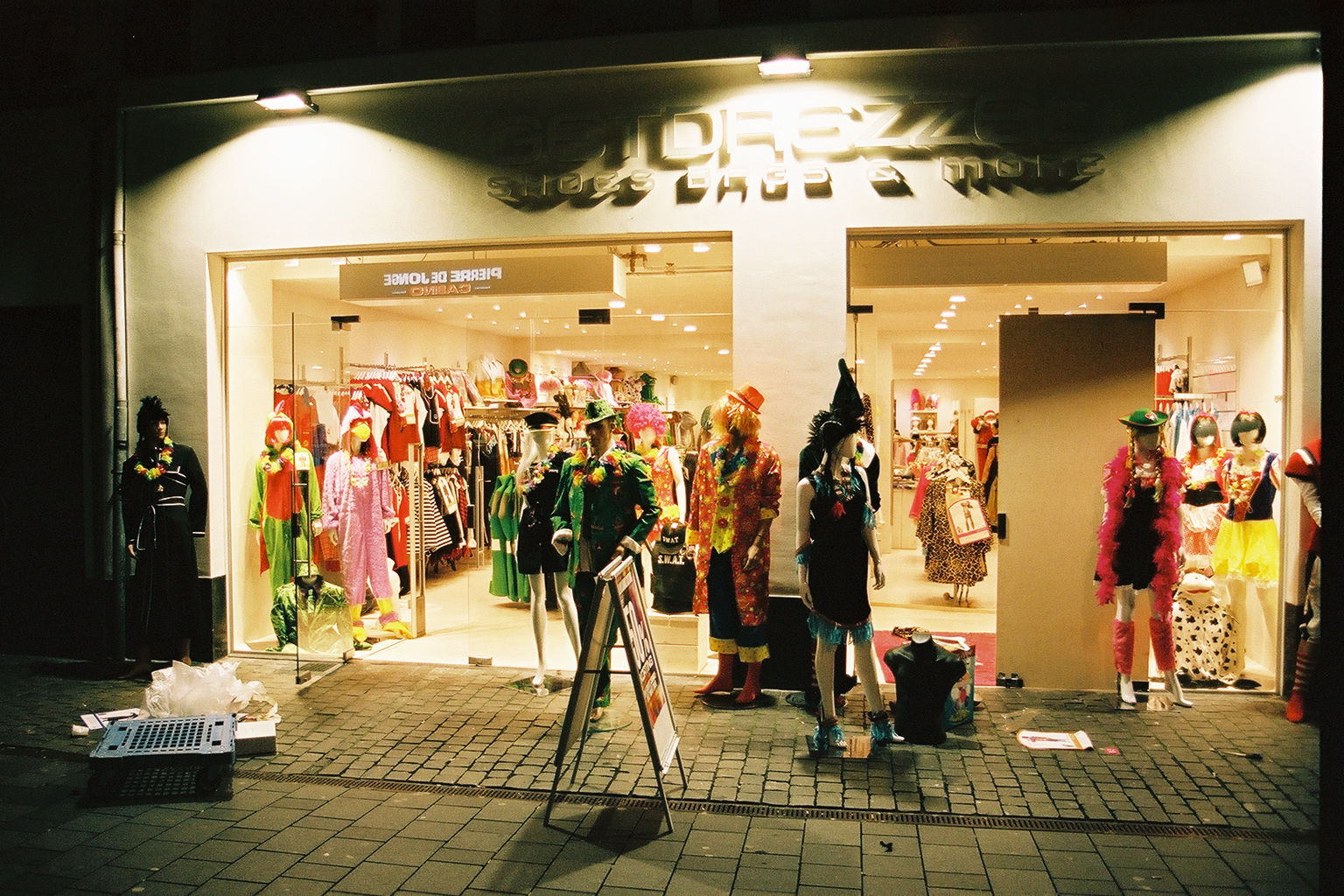
Maarten van Riel, http://wendepunkt.nl/
7.
In post-digital art, the artist recaptures new media and brings them back into the offline world. This also applies in literature, with the material of the writer, namely language. The language of MTV that surfaces in the poem of Maarten van der Graaff is but one example. Sheila Heti too echoes the language of popular media. Not only emails have been included in How should a person be? (which is not so shocking for a novel these days), her style, which sounds a bit awkward at first, seems to have gone through the social web. In so doing, the book gives a voice to how, specifically now in this day and age, one ‘must be’.
She is, for example, exceptionally good at what sounds like inspirational quotes: ‘Catalog what you value, then put a fence around these things. Once you have put a fence around something, you know it is something you value.’ Her heart spawns all her feelings and she scatters exclamation marks as if she were an eighteenth century sentimentalist or a keen Facebook user. ‘My heart caught on my rib. If only I could figure out what that was — the decision that would benefit everyone — I would do it!
Knausgaard, who fiercely dislikes the social web, expresses his deepest feelings in Book 5, Some Rain Must Fall, like so: ‘Ooooh. Ooooh. Ooooh.’ Knausgaard’s style has often been described as nonchalant, his imagery as imprecise, his words too grand and indefinite. Just like Heti, he can be extremely sentimental. Seen within a post-digital context however, his style gains maximal expression: it focuses on making connections with people, sharing the things you feel and opening up who you really are, whatever that might be. ‘Everyone was interesting, everyone had something to say that I could listen to and be moved by until I left and they were reclaimed by the darkness.’ He continually tries to connect with other people but without much success. ‘My plan had been to write. But I couldn’t, I was all on my own and lonely to the depths of my soul.’ These are pretty monumental words, yes, which he uses without an inkling of irony.
Heti too leaves irony behind:
For so long I had been looking hard into every person I met, hoping I might discover in them all the thoughts and feelings I hoped life would give me, but hadn’t. There are some people who say you have to find such things in yourself, that you cannot count on anyone to supply even the smallest crumb that your life lacks. Although I knew this might be true, it didn’t prevent me from looking anyway. Who cares what people say? What people say has no effect on your heart.
In a roundabout way, Heti is looking for the wisdom of others; how she may learn from it, even though she doesn’t really want to listen to them when it comes down to it. The expansive, chatty but always hyperbolically serious and tongue-in-cheek way she writes, reminds one of the language of blogs, the online genre which literature has always adamantly tried to avoid. In an article by Kavita Hayton about literary weblogs from 2009, blogs are viewed as an inferior form of writing, only meant as intermezzo and unfit for paper, hence their online existence. The writers give these blogs titles such as ‘throwaway language’, they are thoughts that ask the reader to be ‘uncritical’. In 2009 these words were not positive, let alone possible unique selling points. ‘It is apparent,’ Hayton states, ‘that the informal, “throwaway” language in the titles of these blogs would not translate well onto a book cover’. Heti’s title How should a Person Be? shows how much this has changed.
Enlarge

Maarten van Riel, http://wendepunkt.nl/
8.
This ‘post-blog’ quality, that shows a post-digital venture with the writer’s material, also relates to what Knausgaard calls the communal. Both Heti and Knausgaard maintain the myth that after a long struggle with themselves and the outside world, they quite naturally, even automatically wrote the book we are reading now (in reality, so to speak). Both wanted to write something completely different, a conventional novel or commissioned play, but failed. They struggled with this up to the point of self-hatred and eventually gave up. As happened before on blogs, the writers share with the reader their experience of how much effort is needed to produce something. In the end, they only succeed in writing when they just sit down and let it happen, once they put their ‘adopted role’ on hold, decide to let go and let themselves be carried along with the flow of the world. It is only by surrendering to a kind of écriture automatique that they are able to come closer to themselves and they are longing to show the reader how this process works.
Maartje Wortel writes in the aforementioned story ‘Writer II’: ‘Marie. She says she would rather I didn’t write about her. I exist for real, you can’t make that any more beautiful. I don’t want to make it more beautiful, I say.’ She pleads her lover; can she include her in her work? – ‘I would rather you didn’t,’ she says, but the writer goes ahead and does it anyway. Just like Sheila records and transcribes the talks she has with her friend Margaux in How should a Person be?, even though Margaux doesn’t want her to. The voice of somebody else helps them to find out how to write about themselves, about who they are, even though this eludes them, time and time again.
Van der Graaff seems to have let go of principles like these a long time ago. He makes the automatic activity of writing explicit in his poetry volume Dood werk by using stylistic techniques like lists and ‘clocked poetry’. ‘I time the poem to be free,’ he notes, even if it is only a question of sitting down, beginning and producing words. The others will enter by themselves. In what seems almost a striking portrait of Knausgaard, he writes: ‘11:30: Somewhere in a poem, / an article, or in a conversation , / I met an exchange student / who during his stay abroad in a country of his own choice / had spoken to no one. / His dry, mineral loneliness touched me / and I thought of all the ambitious, friendly people / who are lonely in a paradise of knowledge, / growth and technology.’
Perhaps everyone is lonely in a paradise of knowledge, growth and technology. In another clocked poem Van der Graaff writes: ‘1:37: I live in Holland. / I am a secret / that is kept by certain / communities, who are not inclined to share.’
A community who keeps secrets, not inclined to share, must be blasphemy to digitization, to a world in which everything is becoming quantifiable and split into data, regardless of the generation of data we are supposed to make happen ourselves through sharing. The analogue, that which cannot be digitalized, is kept secret in the heart of the community, and this secret is the ultimate object of desire for the post-digital condition.
Sheila Heti writes about how the communal can form a positive experience: ‘Luck unfurled at the slightest touch. I had a sense of the inevitability of things as they occurred. Every move felt part of a pattern, more intelligent than I was, and I merely had to step into the designated place. I knew this was my greatest duty – this was me fulfilling my role.’ It sounds almost like a religious experience. The flipside of this communal pattern is a kind of limitation to one’s freedom. It is the paradox of the post-digital condition: you are supposed to be free and autonomous but you cannot escape all the external and uncontrollable influences that come from the world we live in. The community is both desired and feared, we suffer because of it but at the same time, we seek it.
Enlarge
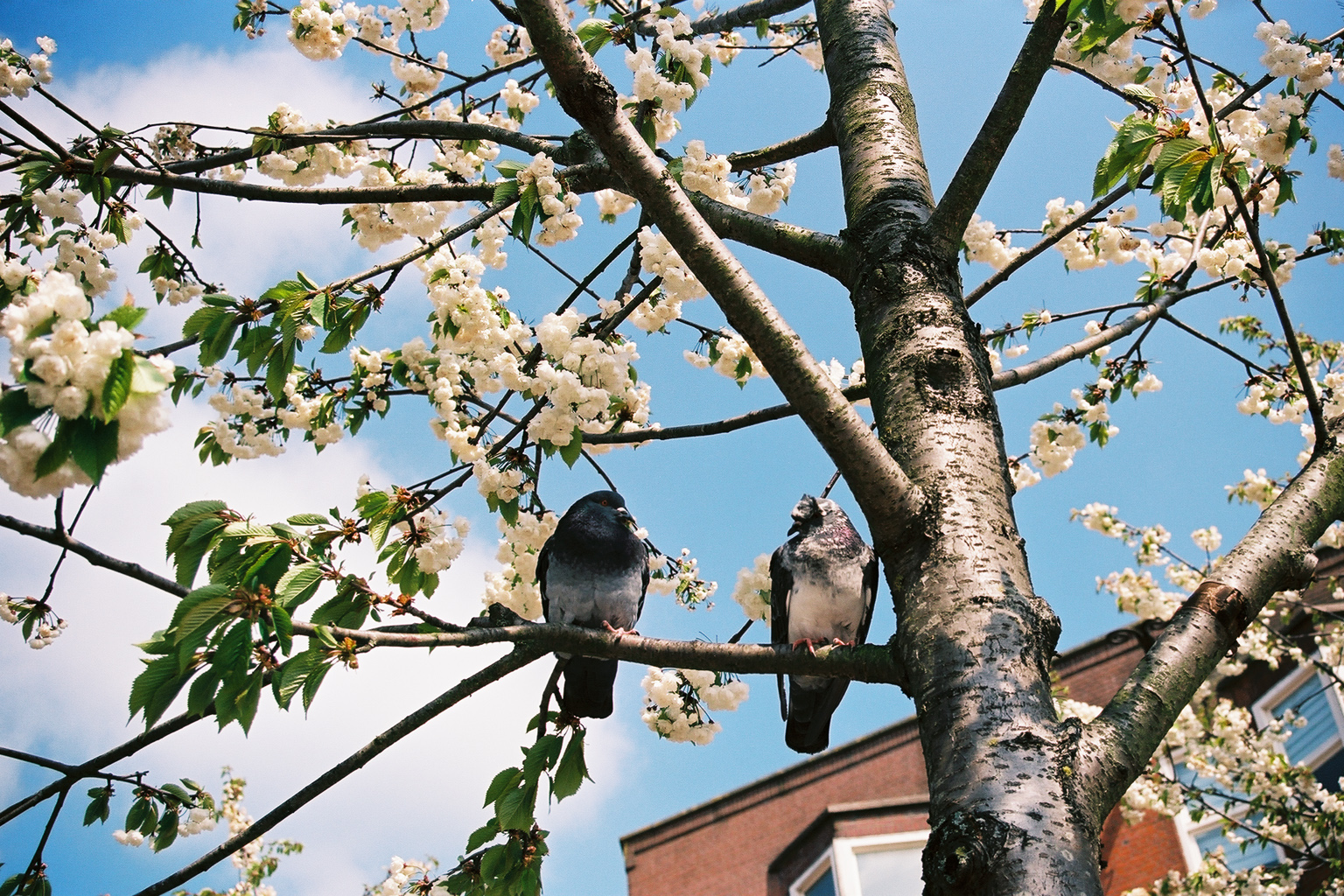
Maarten van Riel, http://wendepunkt.nl/
9.
If the communal is the analogue experience we are all looking for, it inherently triggers a contradiction. Language and images surround you in the ugly, trivial, exhibitionistic and messy world that hustles itself into your perception through all kinds of sounds, images, opinions and statements – something you need to resist. At the same time these shared cultural expressions are the interface between the individual and the collective, generating the communal: jokes, the language of self-help books, popular programs, social media, and also history and poetry. They present an opening towards the communal, are an expression of the desire to find a connection with others, to be absorbed in a shared world. At the same time the communal can also feel constraining, a cultural straightjacket even. Knausgaard’s hundreds of pages of analysis of a poem by Paul Celan and the autobiography of Hitler in My Struggle: Book 6 are poignantly illustrative of this ongoing duality.
For Knausgaard the heart forms the symbolic interface between the individual and the communal. Just like Heti, the heart beats through his novel, starting with the very first sentence: ‘For the heart, life is simple: it beats for as long as it can. Then it stops.’ A heart is somebody’s heart and, at the same time, it is something we all possess. The heart is yours but at the same time, you have no power over it – if it stops, it stops and then everything stops. The heart, Knausgaard says, is ultimately both individual and communal at the same time. ‘The heart never errs. The heart never ever errs.’
The heart and its countable heartbeats are perhaps our most precious possession, now under siege by digitization. The internet gave unlimited freedom to be who you wanted to be – an illusion we have been bereaved of long ago. We are being digitized to our hearts and who we are is being reduced to ‘vital data’: name, birthplace, date of birth, and even more datafiable units. To deal with this, I read in the work of these writers, we have to loosen our contrived grip on our own private core, stop resisting so as to be able to move with the flow of the world and swim with the current of the communal. We need to let the world in instead of keeping it out, compensate the digital with the analogue, understood as that which cannot be divided. The individual? Maybe – but it would have to be an individual who does not believe in staying herself, staying true to herself.
Maarten van der Graaff writes in the article ‘Druk op huid’ (‘Pressure on the skin’, published online just like the other comments quoted): ‘The problem is I don’t know how to write about the community. (...) I don’t want to be creative. I want to disengage from my inner world of struggle by just writing “me, me, me” incessantly. Sometimes I think the epic can be achieved through dissolution and entropy. The Epos as an exercise, a series of movements that doesn’t tell the “story of the tribe” but at least, makes it audible as a social sound.’
How might that social sound transmit as? ‘Ooooh. Ooooh. Ooooh.’

Miriam Rasch works for the Institute of Network Cultures (INC), University of Applied Sciences Amsterdam. She holds a Master’s degree in Literary Studies and Philosophy. She writes essays, reviews, and experimental literary texts for different websites and magazines in The Netherlands. In June 2017, a collection of essays on the internet, literature, and philosophy will be published by Dutch publishing house De Bezige Bij.
(c) De Bezige Bij & Miriam Rasch, 2017
References
Fyodor Dostoevsky, Demons, translated by Richard Pevear and Larissa Volokhonsky, Everyman’s Library, 1994.
Sheila Heti, How Should a Person Be?, Henry Holt and Company, 2012.
Maarten van der Graaff, ‘Nachtploeg – Eens was ze veraf’, Oote Oote, 3 January 2012, http://ooteoote.nl/2012/01/nachtploeg-2/.
‘MTV Made’, Wikipedia, https://en.wikipedia.org/wiki/Made_(TV_series).
Karl Ove Knausgård, Some Rain Must Fall: My Struggle Book Five, translated by Don Bartlett, Archipelago Books, 2016. Book Six is not translated into English yet, translation of the quote by Miriam Rasch.
David Shields, Reality Hunger: A Manifesto, Knopf, 2010.
Maartje Wortel, Er moet iets gebeuren, Das Mag, 2015.
Kim Cascone, ‘The Aesthetics of Failure: “Post-Digital” Tendencies in Contemporary Computer Music’, Computer Music Journal, Winter 2000, vol. 24.
Florian Cramer, ‘What is Post-digital?’, APRJA, http://www.aprja.net/?p=1318.
Alessandro Ludovico, Post-digital Print: The Mutation of Publishing Since 1894, Onomatopee, 2012.
Sheila Heti, ‘My Life Is a Joke’, The New Yorker, 11 May 2015, http://www.newyorker.com/magazine/2015/05/11/my-life-is-a-joke.
Kavita Hayton, ‘New Expressions of the Self: Autobiographical Opportunities on the Internet’, Journal of Media Practice Volume 10 Numbers 2&3, 2009.
Maarten van der Graaff, Dood werk, Atlas Contact, 2015.
Maarten van der Graaff, ‘Druk op huid’, juni 2015, http://n30.nl/blog/druk-op-huid/.
